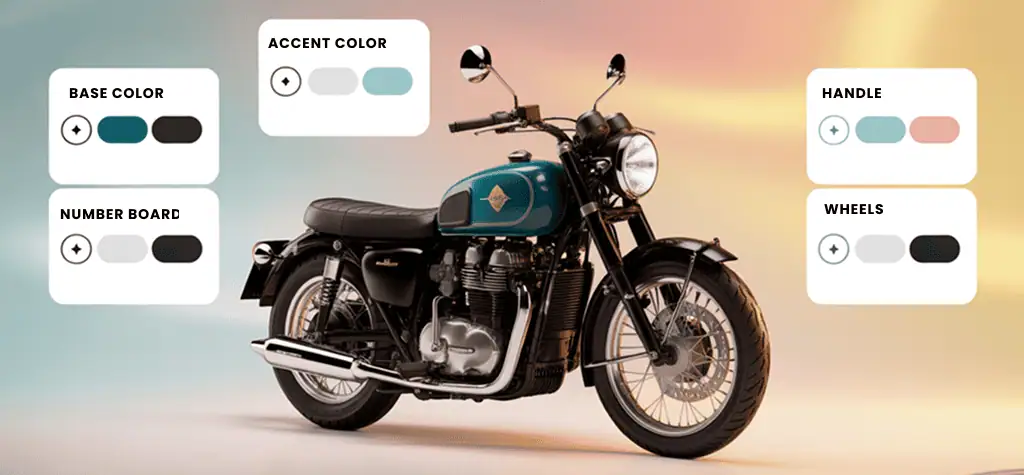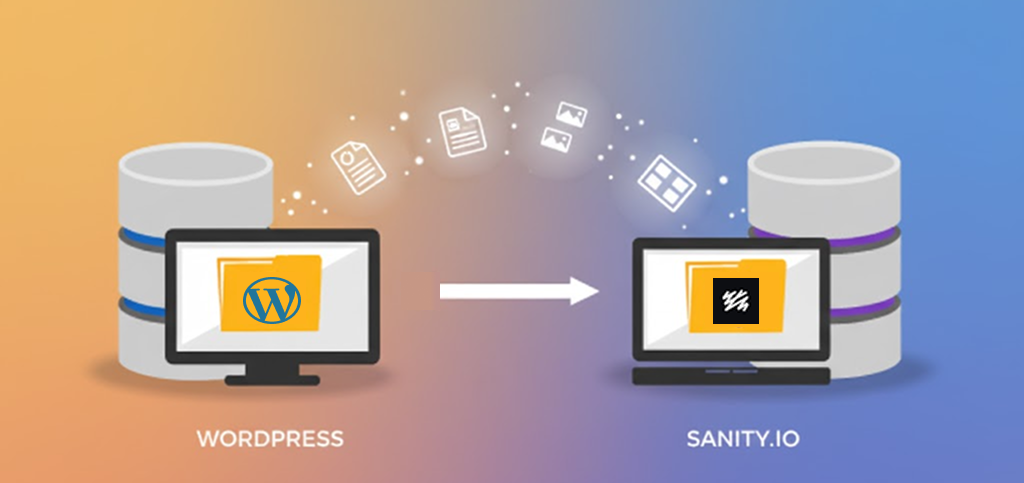
Migrate Content from WordPress to Sanity Headless CMS: Optimize Site Speed
Website speed is crucial for user retention, engagement, and SEO. Research shows 53% of visitors abandon a site if it takes more than three seconds to load. Performance is the primary component for user retention and SEO growth. For our client’s content-driven wellness blog website, slow WordPress load times were impacting growth and engagement.
Our dedicated WordPress developers migrated the site to a modern stack: Sanity Headless CMS, Next.js, and Vercel. Result? Faster load times, a scalable architecture, and a system built for the future.
In this blog, we’ll break down how Sanity’s headless architecture provides faster content delivery and why migrating content from WordPress to Sanity can be the best choice for content-driven websites. Hire expert React Js developers to ensure a smooth, high-performance website post-migration. Let’s get started!
Why Migrate content from WordPress to Sanity Headless CMS?
For many content-rich websites, WordPress struggles to keep up with the growing demands of performance and scalability. Here’s how WordPress can hinder your website’s potential:
- Plugin Overload: WordPress relies on many plugins, which slow things down. Each plugin adds complexity and can create compatibility issues. The result? Slower load times.
- Monolithic Themes: WordPress themes are often rigid. Customizing them to fit your brand takes time and effort. It’s frustrating and inefficient.
- Database Bloat: WordPress sites with lots of content suffer from slow database queries. As the site grows, performance issues get worse, making scaling difficult.
Migrating to Sanity Headless CMS clears these bottlenecks. It’s a streamlined, efficient system built for growth and speed.
Why Sanity & Next.js Are the Future of Fast Blogs?
Website performance has become crucial than ever. A modern tech stack is essential. Here’s why Sanity Headless CMS and frontend Next.js are the perfect duo for fast, scalable blogs:
| Feature | Description |
|---|---|
| Headless CMS (Sanity) | Sanity separates content management from the frontend. This gives flexibility and efficiency. Content is delivered via APIs, ensuring real-time updates and faster delivery. Result? Faster load times and a better user experience. |
| Next.js Static Site Generation (SSG) | With Next.js, pages are generated at build time, offering instant load times for users. It boosts SEO, speeds up the site, and makes browsing smoother. |
| Minimal Dependencies | WordPress uses tons of plugins and heavy themes. Next.js and Sanity keep it lean. It minimizes overhead and eliminates bloating for better performance. |
| Optimized Performance | Next.js offers Incremental Static Regeneration (ISR). On-demand page updates without rebuilding the whole site. And with Vercel’s global edge network, you get faster page rendering, less latency, and faster load times—especially for users worldwide. |
Together, Sanity and Next.js deliver the foundation for high-performance, scalable blogs. Speed, engagement, Performance; everything together.
Looking to enhance your website with Sanity Headless CMS? Hire React.js developers today to accelerate your website’s performance and scalability.
Steps to Migrate Content from WordPress to Sanity: Our Case Study
At The Brihaspati Infotech, our expert team has successfully migrated a content-rich wellness blog website from WordPress to Sanity headless CMS. The old WordPress platform couldn’t keep up with the demands of performance and scalability. Slow load times were hurting user engagement and SEO.
This wasn’t just a performance upgrade. It was a strategic shift. By using Sanity’s headless architecture, we separated content management from the frontend. Content is now delivered via APIs in real time. Frontend Next.js ensured faster page loads and boosted SEO with static site generation (SSG). For hosting, we used Vercel. Its global edge network and auto-scaling features significantly improved performance.
The result? A faster, more responsive website that scales with ease. Here’s a detailed breakdown of how we approached the migration and built this scalable solution:

1. Prepared WordPress Content for Migration
- Exported Content from WordPress: We used WordPress’s built-in export tool. Got all the key content—posts, pages, categories, tags, and media. They were saved as an XML file.
- Reviewed and Cleaned Content: Deleted old drafts, unused plugins, or unnecessary media. We made sure only relevant content was migrated.
- Handled Media Files: Organized images, videos, PDFs, etc., for re-upload. Bigger media files were manually re-uploaded to ensure good quality in the new CMS.
2. Set Up Sanity CMS
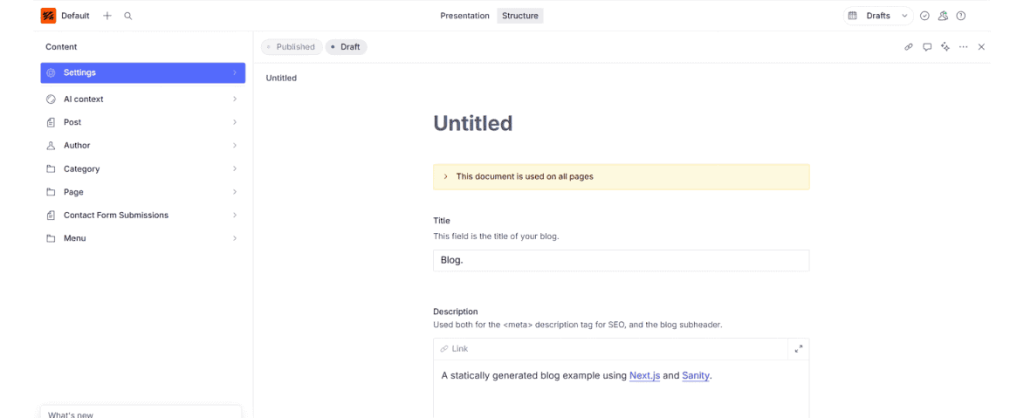
- Created a New Sanity Project: Ran Sanity’s CLI tool. This set up the backend.
- Configured Schemas for Content Types: Created custom schemas for posts, categories, authors, media, etc. Sanity’s flexible system makes it easy to structure content your way.
- Defined Custom Fields: Set up the right field types for text, images, references, and rich text. This would align WordPress data with Sanity’s structure.
3: Imported WordPress Data to Sanity

- Used Import Tools: Used Sanity’s import tool or built a custom script to convert the WordPress XML into a Sanity-friendly JSON format.
- Mapped WordPress Data to Sanity Schema: Made sure WordPress content mapped correctly to the Sanity fields. We also transformed some data to fit the new model.
- Resolved Shortcodes and Custom Content: We converted WordPress shortcodes and custom HTML to match Sanity’s content structure. Ensured a smooth transition.
4. Build the Frontend with Next.js

- Integrated Next.js for Static Site Generation: Next.js fetches content dynamically from Sanity. Static pages are generated at build time, which speeds up load times and improves SEO.
- Implemented Incremental Static Regeneration (ISR): With ISR, frontend Next.js can update pages incrementally without rebuilding the entire site. Content remains fresh with fast load times.
- SEO Optimization: Used Next.js’s SEO features. Optimized titles, meta descriptions, URL slugs, and routing for better search engine visibility.
5. Deployed & Optimized with Vercel
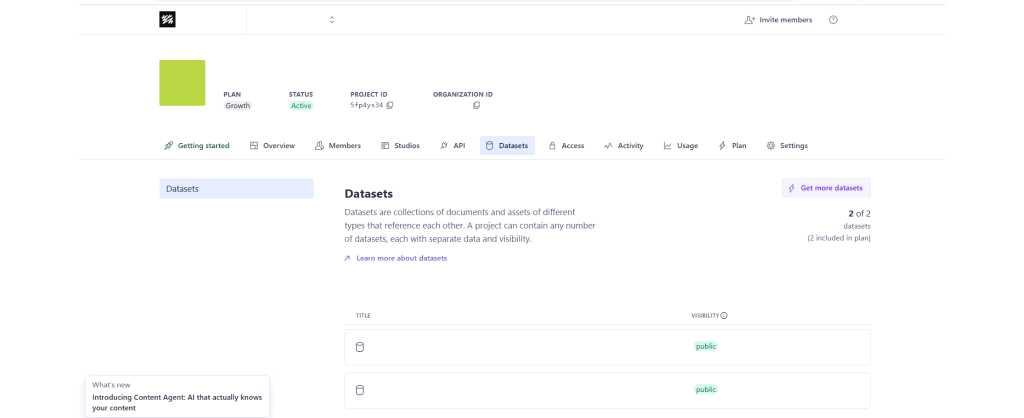
- Deployed with Vercel: Deployed Next.js site with Vercel hosting. It’s easy, serverless, and scales automatically.
- Leveraged Automatic Scaling: Vercel handles scaling based on traffic. No need to worry about manual interventions or downtime.
- Utilized Global Edge Network: Vercel’s edge network speeds up static assets delivery. Faster performance, even for users far from the server.
Need assistance with migrating your WordPress site to Sanity Headless CMS? Hire WordPress developers to ensure a smooth, seamless migration process.
WordPress to Sanity Migration: Challenges & their Solutions
Migrating content from WordPress to Sanity Headless CMS comes with challenges. While the benefits of a modern, scalable CMS are clear, there are key issues to address. Here are the main challenges we faced and how we solved them:
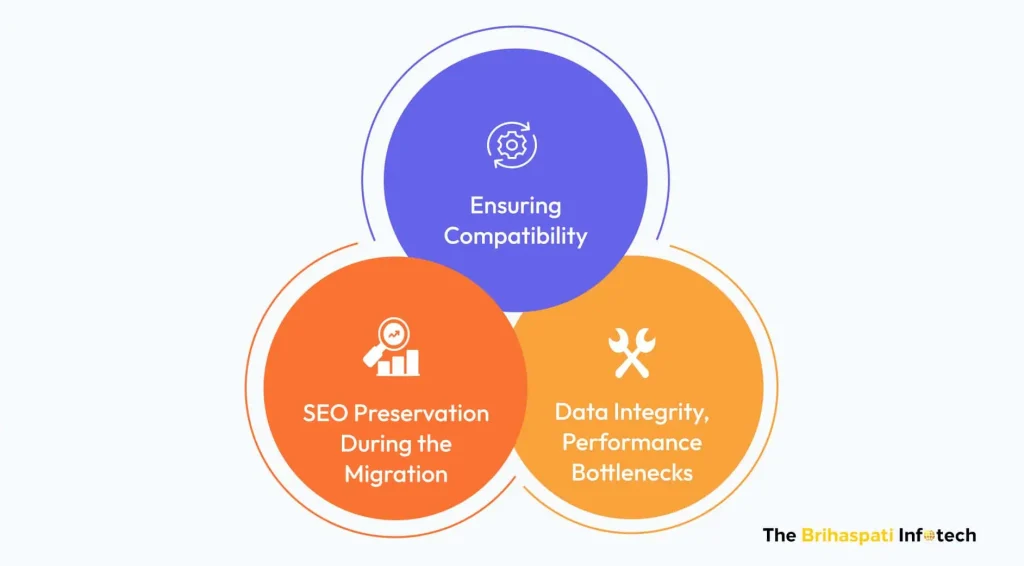
1. Ensuring Compatibility When Transferring Content
- WordPress content often uses shortcodes and embedded media, which don’t fit into Sanity’s structure.
- To solve this, we built a custom pre-import transformation tool. It cleaned up the content, converting shortcodes and WordPress-specific elements into Sanity-friendly formats. This ensured smooth migration with minimal disruption to the content’s structure.
2. SEO Preservation During WordPress to Sanity Migration
- Maintaining SEO was critical. We needed to preserve URL structures, metadata, and other SEO elements.
- We used Sanity’s flexible schemas and custom redirect rules to map old URLs to the new structure. Structured data (schema.org) markup was implemented to keep rich snippets and optimize search visibility.
3. Data Integrity and Performance Bottlenecks
- Ensuring data integrity was key. We had to move large amounts of data from WordPress to Sanity without risking performance.
- To minimize issues, we ran incremental migrations and tested performance at each step. Using Sanity’s real-time updates and Next.js’s Incremental Static Regeneration (ISR), we kept server load low and sped up content delivery. We also streamlined media imports to avoid post-migration performance problems.
Ready to elevate your content website’s performance and scalability? Our expert Website Migration Services ensure a seamless transition to a faster, more efficient platform.
Key Benefits of Adopting Sanity Headless CMS
Migrating to a headless CMS like Sanity brings powerful advantages. By decoupling content management from the frontend, Sanity ensures faster, more scalable websites that are easier to maintain. Here’s why Sanity is a top choice for modern content management:
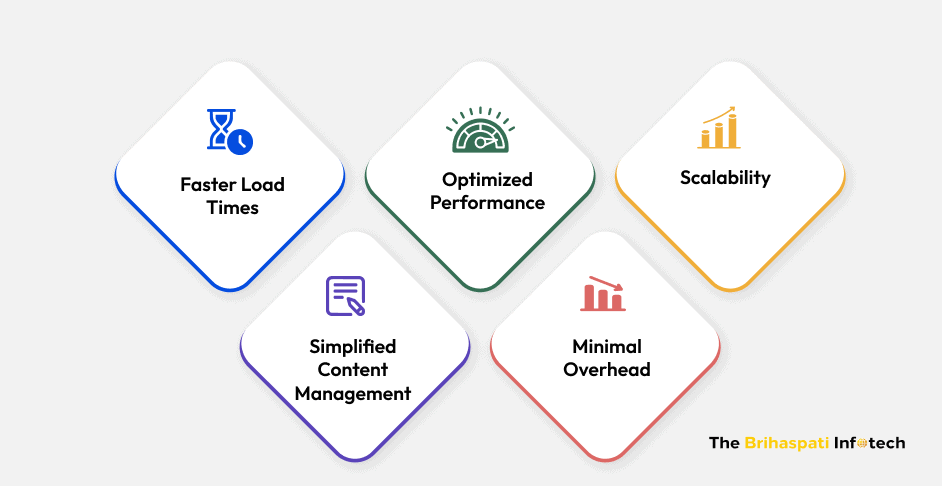
- Faster Load Times: Sanity’s real-time content updates and efficient CDN ensure fast content delivery globally. This cuts down load times, improving both user experience and SEO.
- Optimized Performance: When integrated with Next.js, Sanity optimizes caching and static site generation (SSG). Next.js’s Incremental Static Regeneration (ISR) ensures dynamic pages load quickly. Static and dynamic content? Perfectly balanced.
- Scalability: Sanity’s headless architecture grows with you. As content or traffic increases, Sanity handles it easily without sacrificing performance.
- Simplified Content Management: Sanity’s intuitive interface lets even non-technical users manage content in real-time. Updates are quick and easy, keeping your site fresh with minimal effort.
- Minimal Overhead: No heavy plugins or themes. Sanity keeps things lightweight and secure. No more complex, plugin-heavy systems like WordPress—lower costs and less maintenance.
With Sanity, you get a powerful, scalable, and efficient content management system, built for the future.
Ready to optimize your website with Sanity Headless CMS? Hire our expert React.js developers to help integrate Sanity seamlessly into your frontend for maximum performance.
Frequently Asked Questions
Migrating to Sanity Headless CMS boosts your website’s speed, scalability, and flexibility. It removes the need for bulky plugins and themes, speeds up load times, and streamlines content management.
Ready to level up your website? Contact us today for expert Website Migration Services!
No, migrating to Sanity won’t hurt your SEO. In fact, faster load times and better performance can actually improve your SEO ranking. We ensure SEO redirects and schema implementations are in place to keep your rankings intact.
Worried about SEO during migration? With our Custom Web Development Services, we make sure your site’s SEO stays strong throughout the process. Let’s talk.
Yes! Since Sanity is a headless CMS, you have full control over frontend design.
Looking to maintain your design while migrating to Sanity? Hire WordPress developers to help you with seamless migration.
The cost of the WordPress to Sanity migration depends on several factors:
Website Size & Complexity: Websites with lots of pages and custom features.
Data Transformation: WordPress content needs to be formatted.
Frontend Development: Redesigning or adapting your site’s frontend.
SEO & Redirects: Maintaining SEO and ensuring proper URL redirects.
Custom Integrations: If you need custom API integrations or extra features
Need a precise quote? Contact us!
How Long Does the WordPress to Sanity migration take?
The timeline for the WordPress to Sanity migration depends on the following factors:
Website Size & Content Complexity
Frontend Development
SEO & Redirects
Testing & Optimization
On average, a WordPress to Sanity migration can take between 3 to 4 weeks.
Need a more specific timeline? Contact us!
Sanity Headless CMS Migration: Boost Performance
Migrating to Sanity Headless CMS is more than just a performance boost. It’s a strategic upgrade to a modern, scalable, and efficient content management system. With Sanity, your website will load faster, update content in real time, and enjoy the flexibility of a headless architecture. This makes it easy to scale and integrate with the latest technologies.
Our expert team specializes in website migration services, ensuring a smooth migration from WordPress to Sanity Headless CMS. We handle everything—from data transformation and content import to frontend development with Next.js and Vercel for better performance. We also preserve your SEO integrity, minimizing any disruptions to your rankings while maximizing speed and scalability.
Ready to unlock your website’s full potential? Contact us today to discover how our professional migration services can transform your site, improve efficiency, and deliver lasting results.
Stay Tuned for Latest Updates
Fill out the form to subscribe to our newsletter




